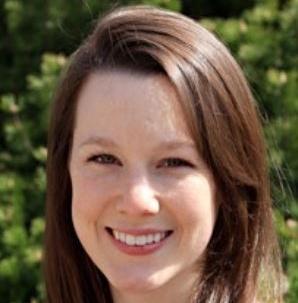
Within the lab of Ornit Chiba-Falek, PhD, Julia Gamache, PhD, is investigating the origins of Alzheimer’s disease (AD)--both the exact genes and cell types in the brain that lead to development of AD, as well as the specific ways that aging contributes to the process. For this week’s “Spotlight” interview, Gamache talks to us about how her research may lead to the development of new therapies to prevent or slow the condition. She also discusses the unexpected joys of collaborative research, the difficulties involved with using cutting-edge techniques, and her plans for the future.
What were your responsibilities within the Department before the COVID-19 pandemic?
I am a postdoc in the Chiba-Falek lab leading a team that is investigating the genetic underpinnings of late-onset Alzheimer’s disease using single-cell genomics on human brain tissue. Single-cell techniques are fairly new and are just beginning to be applied to the study of the brain and neurodegenerative diseases, so I feel very lucky to be involved in this project and the work we do is very exciting! Before the COVID-19 pandemic, we conducted experiments to optimize our approach to perform single-nuclei chromatin accessibility and gene expression studies in parallel.
How have those responsibilities changed over the past few months? What’s one strategy or resource that’s helped you cope, either professionally or at home?
We were fortunate to have completed a round of experiments and to have gotten a lot of sequencing data back from Duke’s GCB core just before stay-at-home policies went into effect. With that data, I have been taking advantage of this time to learn data processing and analysis techniques for single-cell genomics, using Duke’s HARDAC (High-throughput Applied Research Data Analysis Cluster) and various online tutorials. Slack has also been a useful web app to keep in touch with my team and the rest of the lab.
You recently received a CTSA award to support your research into Alzheimer’s disease. What’s the focus of that research? How will your work help us better understand or treat Alzheimer’s disease?
The focus of that project is to elucidate the precise genes and cell types in the human brain underlying the development of late-onset Alzheimer’s disease. We are doing this in a highly innovative way using an integrative single-cell multi-omics approach that combines chromatin accessibility profiling with gene expression profiling. The project builds on previous findings in our lab showing differential open chromatin sites in non-neuronal cells from Alzheimer's brains compared to normal healthy brains. Single-cell technology now gives us the resolution to determine which non-neuronal cell type is responsible for this effect (microglia, astrocytes, oligodendrocytes, or their subtypes?), and will also allow us to assess functional significance by characterizing consequential effects on gene dysregulation.
Another layer of this project is to understand the mechanistic contribution of aging to Alzheimer’s disease. We’ve known for a long time that aging is the biggest risk factor for this disease, but whether and how the genetic factors involved in aging become exacerbated and/or dysregulated in Alzheimer’s disease has yet to be investigated at the single-cell level. Our hope is that this work will provide molecular clues and functional links for pathogenic mechanisms of Alzheimer’s as well as resilience factors in healthy cognitive aging. Eventually, our studies will enable the identification of relevant cell types and novel therapeutic targets for future treatment interventions to delay the onset and/or to halt disease progression.
What do you enjoy most about your work?
I have really enjoyed working in a team-based setting, which is a contrast to my previous experience in graduate school. While working mostly independently forced me to diversify my skillset, it is very helpful to get input and different perspectives from my coworkers, and bounce ideas off of each other. The people I work with, including not just my direct team but also the rest of the lab as well as our collaborators, are outstanding scientists and we help each other solve problems and discuss ways to improve our research. I am learning a lot from them and also enjoying mentoring undergraduate students and new lab members.
What’s the hardest part of your job?
Being at the forefront of single-cell genomics for the study of human aging-related neurodegenerative diseases is both the most exciting and the most difficult part of my work so far. Since the technology is so new, certain aspects of its application don’t yet have a precedent in the field (for instance, how to run a power analysis on the data). There are also new versions of the reagents and software for the analysis being developed all the time, and publications on entirely different ways to perform single-cell sequencing seem to come out on a weekly basis. In navigating this uncertain and rapidly growing field, we have to be flexible in our approach and be prepared to incorporate new methods in our studies.
What plans do you have for the future? If you could have any job in the world what would it be?
I want to pursue a career as an independent scientist, but this early in my postdoc, am still unsure what type of research environment will best suit me. I am drawn to the complexity of human neurodegenerative diseases, and love being in research where every day is different and brings new questions and new ways to answer them. I also really love the scientific writing process and determining the best way to present findings to the field in publications. My ideal job would combine all of these things while also giving me the freedom to choose the direction of the research to best fit my interests.
What other passions or hobbies do you have outside of the Department?
I really love being outside – hiking, biking, running, camping, and canoeing. I also love playing video games with my husband, spending time with our two dogs Mira and Jasnah, cooking, and playing the violin and piano.

Gamache hikes the “Bears Den” trail near Virginia's Shenandoah Valley.